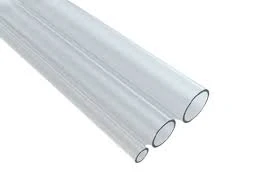Nov . 30, 2024 11:09 Back to list
Impact and Applications of CPVC Pipe Fittings in Modern Plumbing Systems
Understanding CPVC Pipe Fittings A Comprehensive Overview
When it comes to industrial and residential plumbing systems, CPVC (chlorinated polyvinyl chloride) pipe fittings have gained widespread popularity due to their durability, chemical resistance, and ease of installation. This article delves into the unique characteristics of CPVC pipe fittings, their advantages, applications, and installation methods.
What is CPVC?
CPVC is a thermoplastic material derived from PVC. Its chlorine content makes it suitable for higher-temperature applications compared to standard PVC. The material is widely used in plumbing, industrial piping systems, and chemical transportation. CPVC pipes and fittings are particularly well-regarded for their light weight, exceptional strength, and resistance to corrosion.
Advantages of CPVC Pipe Fittings
1. Temperature Resistance One of the standout features of CPVC is its ability to withstand temperatures of up to 200°F (93°C) without losing structural integrity. This makes it a preferred choice for hot water systems, where traditional PVC may not perform effectively.
2. Chemical Resistance CPVC is highly resistant to a variety of harsh chemicals, which makes it ideal for industrial applications where exposure to acids, bases, and organic solvents is common.
3. Low Thermal Conductivity CPVC has lower thermal conductivity than metal pipes, providing better insulation and reducing heat loss in hot water systems.
4. Lightweight and Easy to Handle Compared to traditional metal fittings, CPVC fittings are significantly lighter, making them easier to transport and install. This can lead to reduced labor costs during installation.
5. Longevity and Durability CPVC is resistant to scale and corrosion, ensuring that it maintains its integrity and functionality over time. This durability translates to a longer lifespan for the plumbing system, reducing the need for frequent replacements.
Applications of CPVC Pipe Fittings
CPVC fittings are versatile and suitable for a wide range of applications
- Residential Plumbing They're commonly used in hot and cold water distribution systems, making them ideal for home plumbing. - Industrial Use Due to their chemical resistance, CPVC fittings are suitable for industries dealing with corrosive substances, including chemical manufacturing and wastewater treatment.
cpvc pipe fittings

- Fire Sprinkler Systems Many fire protection systems utilize CPVC because of its ability to handle high temperatures and its lightweight properties.
- Hydronic Heating CPVC is often utilized in radiant heating systems due to its resistance to high temperatures and thermal efficiency.
Installation Process
Installing CPVC pipe fittings is straightforward, though it requires attention to detail to ensure a proper seal and connection. Here's a general overview of the installation process
1. Cutting the Pipes Use a pipe cutter to ensure a clean, even cut. Avoid using a saw, as this can create rough edges that could hinder a proper seal.
2. Deburring After cutting, it’s essential to deburr the edges of the pipe to remove any sharp or rough areas that could affect the fitting.
3. Fitting Preparation Clean both the pipe and the fitting with a suitable solvent to remove grease, dirt, or debris.
4. Applying Adhesive Use CPVC cement to coat both the pipe and the inside of the fitting. Be sure to follow the manufacturer's instructions regarding the type of adhesive to use and the curing time required.
5. Assembling the Joint Press the pipe into the fitting with a slight twisting motion to ensure a good seal. Hold the connection for a short period to allow the adhesive to set.
6. Testing the System Once installed, it's crucial to test the system for leaks before putting it into full operation.
Conclusion
CPVC pipe fittings offer numerous benefits that make them an excellent choice for various plumbing systems. Their versatility, combined with high resistance to temperature and chemicals, positions them as a key player in both residential and industrial applications. Understanding the unique features of CPVC and the proper installation techniques can significantly enhance the performance and longevity of plumbing systems. As demand for efficient and reliable piping solutions continues to grow, CPVC stands out as a durable and cost-effective option for modern plumbing needs.
-
PP U-channel: Chemical-Resistant, Lightweight & Durable
NewsAug.10,2025
-
Transparent PVC Pipe: Clear Flexible Tubing for Fluids
NewsAug.09,2025
-
Durable PP Rigid Sheet: Versatile & High-Quality Plastic Panels
NewsAug.08,2025
-
Premium Glossy PP Rigid Sheet – Durable & Versatile
NewsAug.07,2025
-
High-Quality HDPE Sheet | Durable Plastic Panels
NewsAug.06,2025
-
High-Precision PVC Rigid Sheets for Vacuum Forming | AI-Optimized
NewsAug.05,2025

